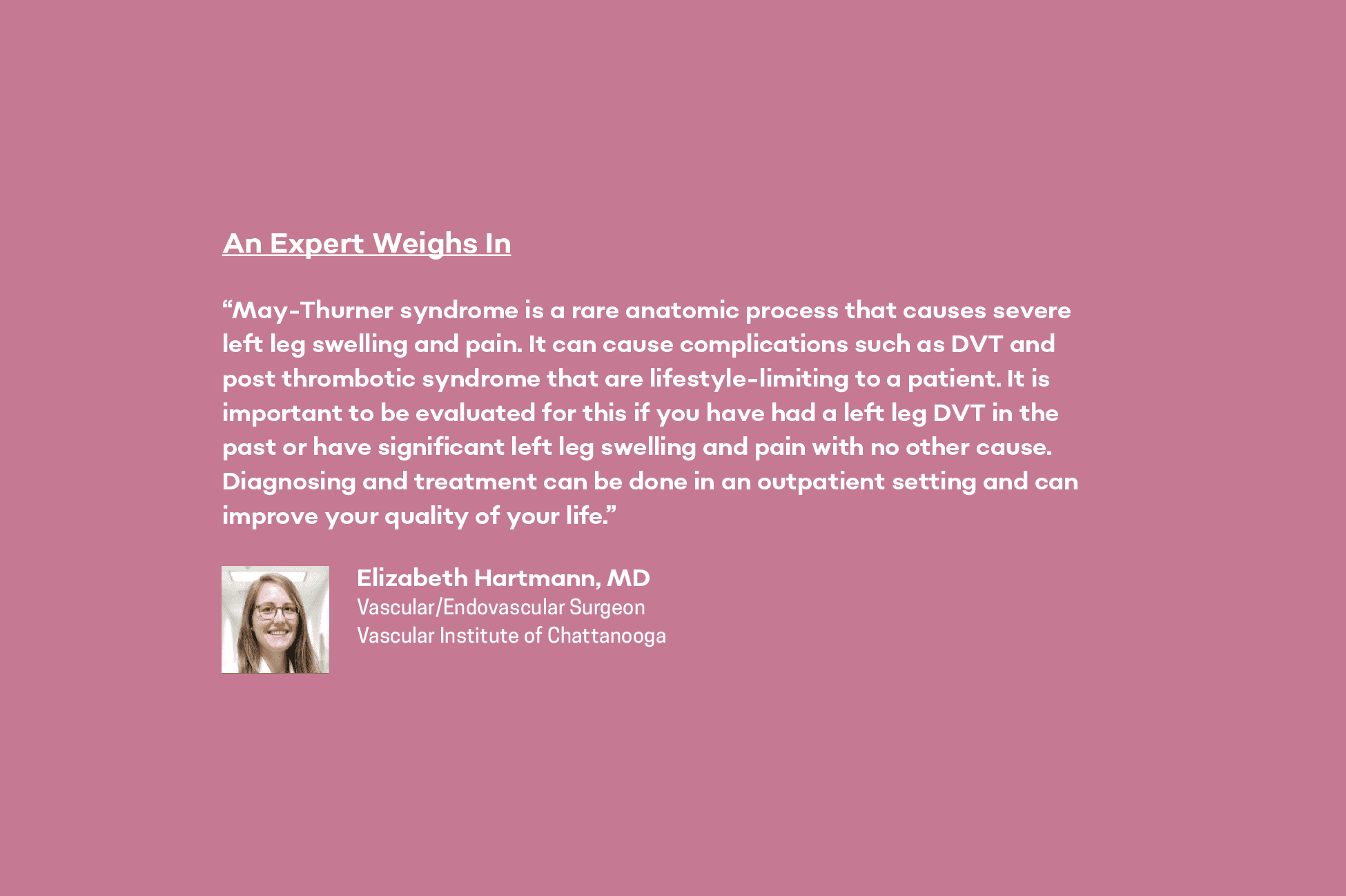Annual Women’s Health Section
This rare but serious syndrome puts women at an increased risk for deep vein thrombosis and other complications.
By Lucy Morris
What Is May-Thurner Syndrome?
Also known as iliac vein compression syndrome, May-Thurner syndrome affects the blood vessels that lead to the legs. Blood vessels, which can be broken down into arteries and veins, distribute blood throughout the body. The arteries carry blood out of the heart, while veins return blood to the heart.
There is usually no issue with veins and arteries that overlap, but with May-Thurner syndrome, the right iliac artery, which carries blood to your right leg, squeezes the left iliac vein and prevents efficient blood flow. Think about it like stepping on a hose.
Why May-Thurner Syndrome Is a Concern
If you have May-Thurner syndrome, you are at an increased risk of deep vein thrombosis. Deep vein thrombosis (DVT) occurs when a blood clot forms in one of the deep veins in the body. DVT doesn’t always present symptoms, but when it does, they tend to include swelling, pain or tenderness, warmth and redness in and around the affected area, and enlarged surface veins.
Although DVT is not life-threatening in and of itself, it does carry potentially serious complications. The most serious complication occurs when a blood clot breaks off and travels through the bloodstream to the lungs. This can create a blockage that eventually leads to what is known as a pulmonary embolism (PE).
A more long-term complication of DVT is post-thrombotic syndrome (PTS). PTS is a consequence of scarring in the vein that formed the clot, and it generally reveals itself two or three years after the initial event. With PTS, you may experience chronic swelling, increased pressure, skin discoloration, and even leg ulcers.
Who’s at Risk?
You’re more at risk for May-Thurner syndrome if you:
- Are female
- Have scoliosis
- Just had a baby
- Have had more than one child
- Take oral birth control
- Are dehydrated
- Have a condition that causes your blood to clot too much
Treating May-Thurner Syndrome
The goal of treatment is to eliminate clots you already have and keep new ones from forming. Your doctor may recommend angioplasty to expand the vein, and stenting, to keep the vein open for blood flow; blood thinners; clot busters; surgery; or other various techniques to reduce your risk of future complications. HS


